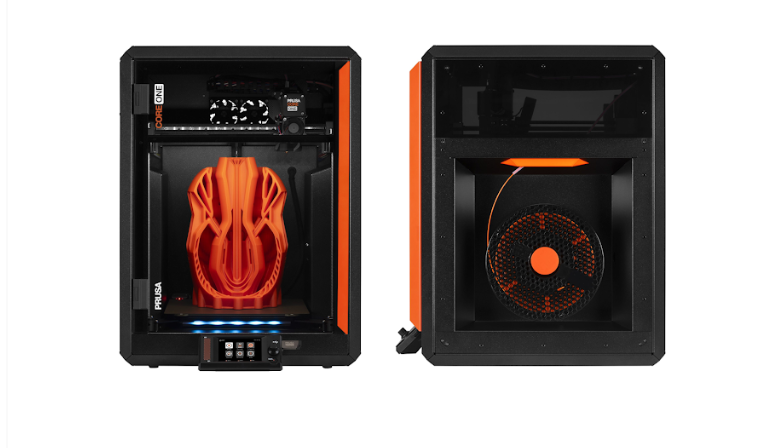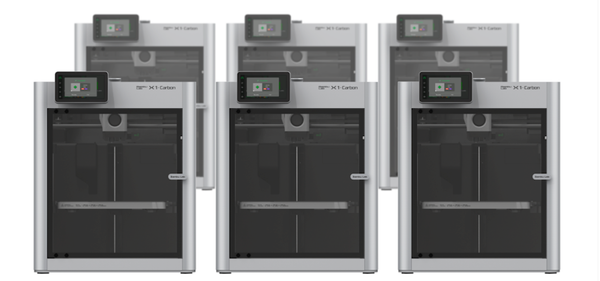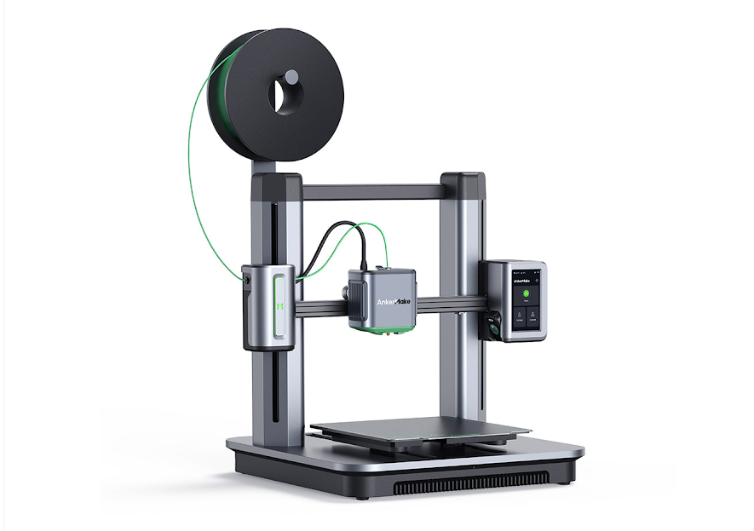Prusa CORE One 3D Printer: Fast CoreXY Printing with Plug-and-Print Ease

Prusa’s CORE One 3D Printer brings high‑end CoreXY performance and simple plug‑and‑print convenience to serious makers and educators. Designed to minimize setup time and maximize productivity, this enclosed machine uses robust engineering and intuitive software to let you start printing within minutes of unboxing. Its compact footprint belies a generous build volume, making the CORE One a compelling choice for anyone who wants professional results without the complexity of industrial machines.
Why it matters
Desktop 3D printing has grown more sophisticated, but the trade‑off between ease of use and advanced features remains a challenge. Many prosumer machines still demand hours of tuning and calibration before they can reliably produce quality parts. The Prusa CORE One addresses that gap by combining Prusa’s proven reliability with a fully enclosed CoreXY architecture and automated calibration routines. By reducing friction at every step—from unboxing to print monitoring—it enables businesses, classrooms, and hobbyists to spend more time creating and less time troubleshooting. Its support for a broad range of materials also means users aren’t locked into specialty consumables; you can print everything from basic PLA to demanding engineering filaments with consistent quality.
Key benefits
- Plug‑and‑print setup – Prusa claims the CORE One can be ready to print in about 10 minutes thanks to pre‑assembled hardware and automatic first‑layer calibration. There’s no need for complex manual tramming or firmware tweaks.
- Fast CoreXY motion – With rigid CoreXY kinematics, high‑flow nozzles and Input Shaping, the printer delivers up to 200 mm/s speeds for faster jobs without sacrificing surface finish.
- Durable steel exoskeleton – An internal steel frame keeps the machine square under load, improving accuracy and extending service life compared to plastic or sheet‑metal enclosures.
- Smart monitoring – Integrated sensors check filament run‑out, automatically pause on tangles, and detect print‑in‑print jams. On‑board cameras and remote notifications allow you to monitor progress from anywhere.
- Multi‑material ready – An optional MMU3 unit allows automated filament changes for up to five colors or materials, making the CORE One suitable for prototyping with supports or producing full‑color models.
- Enclosed & versatile – The fully enclosed build chamber maintains a stable environment for high‑temperature materials while keeping noise and fumes contained.
Proof & specs
The CORE One’s claim of a 10‑minute setup is supported by its preassembled construction and guided calibration. During unboxing, users attach the spool holder, power up, and follow on‑screen prompts for the first‑layer test; there’s no manual belt tensioning or frame squaring required. The machine’s 220 × 220 × 220 mm build volume covers most hobbyist and small‑business needs without taking up too much bench space. Prusa’s advanced firmware includes Input Shaping and Pressure Advance, which mitigate ringing and over‑extrusion when printing at high speeds.
Under the sleek panels lies a powder‑coated steel frame that reduces vibration and keeps the CoreXY belts aligned. A 32‑bit controller and Trinamic drivers run quietly and support features like power‑loss recovery. The printer ships with a 0.4 mm high‑flow nozzle but also accepts hardened and larger‑diameter tips for abrasive or fast‑flow filaments. According to Prusa, the unit will support third‑party filaments and is rated for materials up to 300 °C on the hotend and 120 °C on the heated bed. The optional MMU3 accessory attaches to the top and feeds up to five spools through a single PTFE tube, enabling complex multi‑material prints without manual swaps.
Not ideal for …
While the CORE One aims to simplify high‑performance printing, it is still a premium machine priced well above entry‑level options. Its all‑steel frame and enclosed design make it heavier than open‑frame printers, so it isn’t particularly portable. The machine is scheduled for release in December, meaning early adopters will need to preorder and wait for shipments. Those who mainly produce large‑format parts may find the 220 mm cube volume limiting compared to bigger CoreXY competitors. Finally, the optional MMU3 unit adds cost and complexity; casual users who rarely need multi‑material prints might skip this accessory.



